#Focal Length: 300mm
Text
widefield of the milky way core, 1hr total exposure time from a Bortle 2 dark site at 24mm focal length
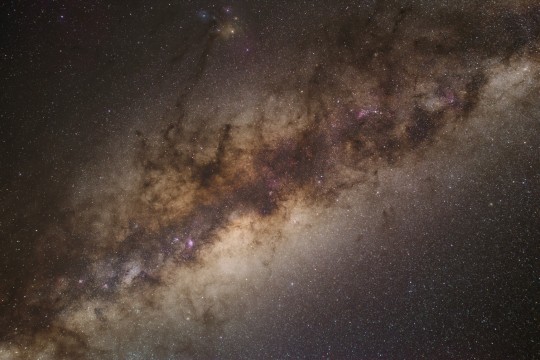
The photo contains a bunch of my other photos within it. I think its neat to see the context of all the nebulae

1:
2:
3:
4:
5:
A little ramble under the cut
The most common question astronomers get is "what does it look like to the naked eye?" Photos are usually much more detailed and colourful, since cameras can take long exposures while our eyes can't.
I was able to observe it from the Bortle 2 site with about 10 mins of dark adaptation (astronomers usually recommend at least 30 mins but I was busy at the time). I edited the photo to try to account for the level of details, colour, and stars that I was able to see with my eyes, here:

It was mostly colourless, but I think I was able to see a faint hint of golden brown colour right in the brightest part of the milky way core. The central bulge of the milky way extended just short of Antares (bright yellow star at the top), and I was just barely able to see the dark dust lanes extending to Antares. The Lagoon nebula was obviously visible as a small diffuse cloud, and the Omega nebula was also visible as a fuzzy looking "star" if you knew where to look.
Keep in mind though this is in the southern hemisphere, where the milky way core passes directly overhead. In the northern hemisphere, this region of the milky way is lower on the horizon, and is thus dimmed by the atmosphere. On the other hand, I didn't adapt my eyes to the darkness for very long, and I was in a Bortle 2 site (the darkest skies are rated Bortle 1), so even better views are definitely possible.
I think the biggest thing that photos can't capture is the sheer size of the milky way in the sky. It stretches across the entire sky from horizon to horizon, and at its thickest point it's wider than two outstretched hands at arms length. The sky is also dotted with stars covering your entire field of vision. As much as it's a cliché thing to say, you really do get a sense of yourself on earth floating through space. It's an insanely immersive experience
157 notes
·
View notes
Note
This might sound like a weird question, but have you ever come across a camera with a Bird Watching setting? I have an Olympus SP-800UZ and one of the modes it comes programmed with is literally called that, for taking pictures of birds in the wild.

As someone whose special interest is birds, I love this setting and use it a LOT, but I've never been able to find another camera with a setting like it, and at some point I told myself I didn't want to replace the camera until I could find one with a similar setting.
The reason I ask is because I've been following for a while, and I've come to respect your opinions on photography.
I tried researching your camera and figuring out what exactly the bird watching mode does and even the official manual did not say. If I were to guess, it just sets the camera up with certain parameters that are usually ideal for photographing birds, but I don't think it does anything special that other cameras can't do. You would just have to set a different camera up to those parameters rather than the camera doing it for you.
If I were to guess, it probably enables a certain autofocus mode for small subjects and limits how slow the shutter speed can go so you don't get motion blur when very zoomed in.
However, I know exactly which features are important to get good bird photos, so as long as the camera has the following features, you don't really need a dedicated bird mode. Though if a camera has a "pet mode" it would probably work similarly to the bird mode you are used to.
Most important bird photography features...
Good autofocus
Good zoom range
Image stabilization (Either optical or sensor, not digital)
Autofocus has come a long way in the last few years. It's difficult to assess the autofocus from specifications alone, so you will probably need to rely on reviews to know if the camera locks in on subjects well. Some cameras have pet and wildlife autofocus features that can be very helpful in tracking smaller subjects like birds. So I would look out for any camera that has a pet autofocus mode or a review that says it locks onto smaller subjects well—even if they don't mention birds. If it can lock onto a chihuahua, it can usually do so with a bird too.
Birds and wildlife in general tend to get spooked easily and it is often difficult to get close without them running or flying away. So having a longer zoom range can really help you keep your distance and not startle your subject. I would say the minimum focal length for getting good bird shots is around 300mm (on a full frame camera). Some cameras only quantify their zoom by magnification (20x, 30x, 40x, etc.) and don't really say what that is in relation to. So focal length is a better metric to assess how zoomy a lens is. 10-35mm would be wide angle. 50mm is about like our eyes. 100mm is slightly telephoto. And 300mm and above would be very telephoto.
You may need to google the focal range equivalent to a full frame 35mm camera. So you would search "[camera model] 35mm equivalent focal range" to figure that out. And as long as it goes past 300mm, it might be a good candidate for birding.
When you have a camera that zooms in that far, any movement will be exaggerated—especially if you have naturally shaky hands. Not only can that introduce motion blur into your images, but it can make it very difficult to track your subject. Looking through the viewfinder will result in a wiggly mess and you won't know what you are pointing the camera at.
Image stabilization helps negate that exaggerated movement.
There are 3 kinds of stabilization. First is optical, which is built into the lens with a floating glass element. Then there is sensor stabilization (often called IBIS for "in-body image stabilization") which allows the sensor to shift and move to counteract any motion introduced by your hands. And the last form is digital stabilization which is done using the camera's software.
The first two are physical solutions that can adjust on the fly much like a chicken's head.
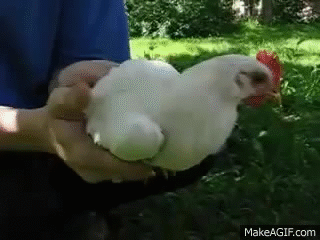
The digital solution is mostly just fancy image cropping. It zooms in a tiny bit on your image and then aligns a continuous crop to give the appearance of a stable image.

The lens and the sensor are still a jiggling mess, but this constant cropping allows you to see the illusion of a stable image in your viewfinder and in the videos you take. And while this is very helpful for tracking subjects and capturing video footage, it will not help you negate motion blur—which is why the other two methods are preferred for still photography.
Bigger cameras can often forego stabilization because the zoom lenses are bigger and heavier and don't shake as much and they let in a lot more light so you can raise your shutter speed to freeze motion. It's still nice to have, and if you have IBIS and optical stabilization combined on a big camera you can almost take pictures in the dark without camera shake, but all of those conveniences can get costly.
The camera you have now is called a "bridge" camera or a "superzoom". These are (relatively) inexpensive cameras that use a smaller smartphone-style sensor but with a more classic camera body surrounding it and a non-changeable lens. Small sensors have one big advantage where if you put a zoom lens in front of them, they can see from Alaska to Russia.
For instance, your camera has an 840mm equivalent lens. That is near telescopic.
For reference, this is what an 800mm lens looks like for a full frame professional camera.

It weighs 10 pounds and costs about $13,000.
Granted the image quality of that lens is in another universe compared to your superzoom, but if you are mostly interested in documenting the birds you are encountering, a superzoom is a neat tool to have. It's like digital binoculars.
So I guess the question is, do you just want to document your bird adventures or do you want to delve into artistic bird photography?
You can upgrade to a nicer superzoom and get some improved clarity and ease-of-use features, which is totally valid. You could even get a "premium" superzoom that can do artistic bird photography in ideal lighting conditions.
Or if you go with a more professional interchangeable lens camera system (ILC), you can achieve some stunning artistic photos like these...



Freezing a bird midflight while catching a fish is just not really feasible with a basic superzoom.
Let's talk about the advantages and disadvantages of a superzoom bridge camera as compared to a more professional ILC setup.
Superzoom Pros
No learning curve. These cameras are designed for novice photographers and have very good automatic functions. You can pretty much pull them out of the box and start taking pictures without knowing the fundamentals of photography.
Incredible zoominess. You can get amazing zoom power for a fraction of the price.
Budget friendly. The top of the line superzoom camera is still only about $1500 as compared to the top of the line mirrorless ILC (for wildlife) which is $6500 *without* a lens. And the lower to mid range superzooms are even more affordable, especially if you consider used options.
Superzoom Cons
Noisy images in low light. These cameras are mostly suited for bright sunny days. The small sensors and cheaper lenses do not capture very much light. In more challenging lighting situations you will tend to get very noisy images due to using a high ISO to compensate.
Inconsistent image quality. Under the best of circumstances, you can get some really beautiful photographs. But when you push the camera to its extremes, the image quality can start to deteriorate. Low light causes noise. The more you zoom in, the softer your images will get. Low megapixels limit your options to crop in on far away subjects—which is often an issue with wildlife.
Deep depth of field. A lot of bird photographers like using shallow depth of field to blur the background so the bird really stands out in the photo. Small sensors can have a very hard time blurring the background unless the subject is quite far away and you are zoomed all the way in. But when you are all the way zoomed in, the image can get soft and lack detail. So you trade image quality for a blurry background.
Lack of professional features and accessories. There are many advanced features that can make bird photography much easier. Some cameras have advanced motion tracking that can allow you to capture birds in flight. The latest generation can even track a tiny bird's eye. There are also accessories that are only made for ILCs. Like motion activated shutter triggers that will take a picture of a bird automatically if you set up a camera near a feeder. There are flashes that work at very long distances. You can get camouflage skins for your lenses so the birds can't see you. Stuff like that.
ILC Pros
Lower image noise. With a bigger sensor and better lenses you can shoot with a very low ISO in good light and get incredibly clean noise-less images.
Better high ISO performance. If you are in low light, you can increase the ISO and still get a very good image. The noise on an ILC is much less distracting and easier to deal with—especially with advanced noise reduction software.
Background blur is easy. Due to the much larger sensor and telephoto lenses, almost every telephoto image will have beautiful blurry backgrounds no matter how small the aperture is.
Sharper, faster lenses. The lenses are much sharper and let in a lot more light. The quality of the image does not decrease as you zoom in. And the sharp optics allow a lot of leeway for cropping. So even if a bird was super far away, you can crop the image after the fact and it will still be quite detailed.
More megapixels. A lot of bird photography needs to be cropped in due to subject distance. Having more megapixels allows for more cropping. (I know I keep talking about cropping, but it really is a huge aspect of most bird photography.)
Advanced autofocus. This is the big game changer, especially on the new mirrorless cameras. The latest Canon and Sony cameras have eye detect autofocus for animals. You can literally lock onto a bird's eye while it is in flight and get perfect focus. It's bonkers.
ILC Cons
Steep learning curve. A lot of people think they'll get a big ILC and immediately get better pictures than their smartphone. They are often disappointed when that isn't the case. You really need to learn the fundamentals of photography to get good photos out of an ILC (free course here). They do have automatic modes, but without learning about aperture, shutter speed, and ISO (the exposure triangle) and how to balance them and when to prioritize what, you might end up with *worse* photos than a smartphone.
Wildlife photography can get very expensive. Big lenses with a lot of zoom are some of the priciest available. There are some budget options, but you will have to sacrifice quite a bit of zoom and light-gathering capabilities. The quality of the photos is usually worth it, but you may have to learn how to get closer to birds to photograph them.
Heavy as heck. Superzooms are very light and portable. A wildlife ILC configuration is very unwieldy. The camera is heavier. The lens is long and heavy. Carrying all of that gear into the wilderness can be quite a hassle.
Some camera suggestions...
Superzoom Options
If I'm being honest, in the sub $300 range, I don't think you'll be able to drastically improve over what you already have. All of the cameras in this range are quite similar and while a few might have some features that are helpful, the image quality is going to be roughly the same.
You are probably going to need to spend at least $400-700 to get a meaningful upgrade from what you have.
The top-of-the-line superzoom would be the Sony RX10 Mark IV at $1100 used. You can get the previous model, the Mark III, for about $900 used. It's a wonderful camera and the image quality and features rival or even surpass some ILC options. If you don't have the time to learn an ILC system but want the best possible quality, this might be an option. But an ILC will still give you better results if you are willing to put in the time.
For more mid-tier superzooms, you might look into the Panasonic Lumix models. They use slightly larger sensors than most superzooms and are known for their lens optical quality along with their stabilization.
The FZ1000 is getting very old, but it is still a powerful camera at a good price. The only downside is the focusing system isn't as advanced as newer cameras. But it will be better than what you have and you can find one used for around $400.
The newer FZ1000 II or the FZ2500 would be great options that have more modern autofocus and a lot more bells and whistles. They are fairly similar and can both be found for around $650 used. They do great video as well.
These are not the only options, but they are ones I know of and models I have heard positive things about. If you want to see what else is out there I would google "bridge superzoom cameras" and then maybe add your price range as well. Read reviews and watch YouTube videos to get a sense of the cameras you are interested in. As long as the camera has decent autofocus, I don't think you need a specific bird feature—so I wouldn't limit yourself in that regard.
ILC Options
When trying to come up with a good bird photography setup for interchangeable lens cameras, there is basically an easy, medium, and hard mode depending on how much you spend.
As I mentioned, the top-of-the-line mirrorless cameras have autofocus tracking that can lock onto a bird's eye while in flight. They have both IBIS and lenses with optical stabilization. They have burst modes that let you take 30 photos per second. They have 50 megapixel sensors that allow you to crop to your heart's content and still have megapixels left over.
It's quite dreamy if you have the money.
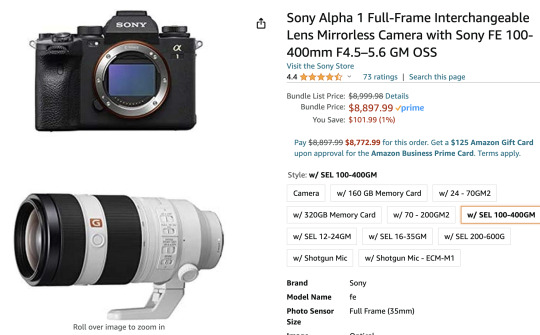
But I'm guessing if you are coming from an Olympus bridge camera that is probably a bit more of an upgrade than you were thinking.
So if easy mode is not viable, let's talk about medium and hard mode.
If you still want the bird detecting autofocus, in body image stabilization, and a pretty zoomy lens, Canon has some newer mirrorless cameras that would take amazing artistic bird shots. It's still spendy, but not $9000 spendy.
The Canon R7 is a great APS-C mirrorless camera with IBIS that can be found used for about $1300. It has 32 megapixels and due to having a slightly smaller sensor, you even get some bonus zoom out of all your lenses at about 1.6x. It's still a much larger sensor than a superzoom, just not quite the size of the Alpha 1.
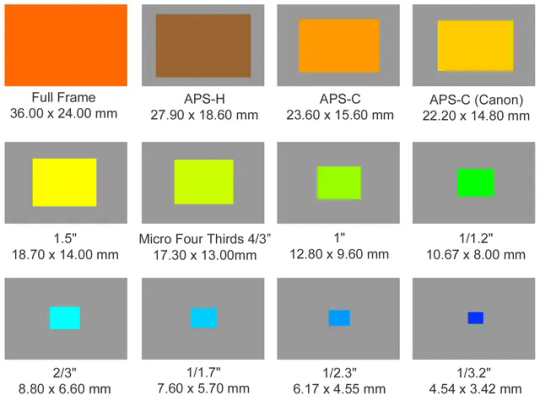
Alpha 1 is Full Frame. R7 is APS-C. And Superzooms don't get any bigger than the 1" sensor.
Pair the R7 with the RF 100-400mm lens ($600 used) with optical stabilization, and you would have a stellar bird photography setup for about $1900. (It would be a 160-640mm equivalent lens on the R7 due to the 1.6x crop factor.)
Which is probably still way more than you want to spend.
So we have the hard mode option.
No bird eye autofocus. No stabilization. You have to learn the fundamentals and practice in order to get good shots. However, wildlife photographers have been getting AMAZING photos with the gear I'm about to suggest. In fact, all of these photos were captured with the hard mode ILC combo.
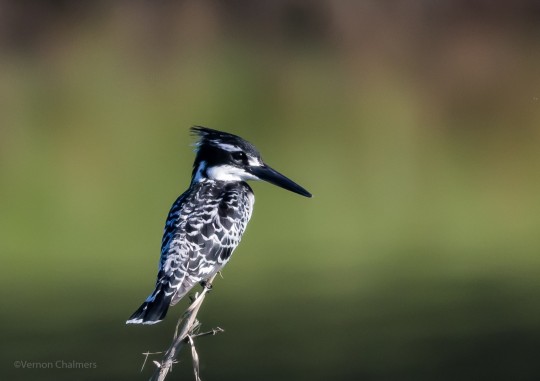

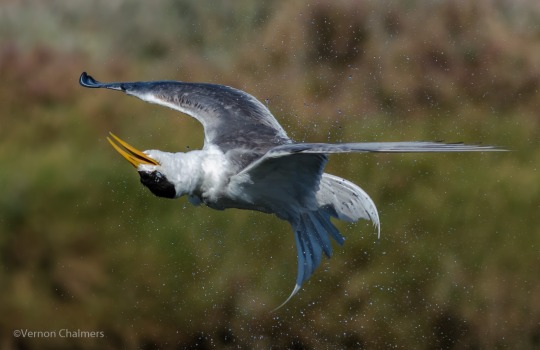
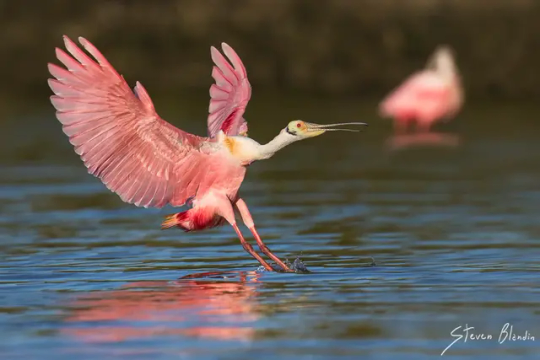
The Canon 7D Mark II has been a beloved camera body for wildlife photography for many years. Many pros still use it to great effect to this day. It doesn't have bird autofocus, but it still has one of the best DSLR autofocus systems that was ever developed. It can even track moving subjects, it just doesn't know it is tracking a bird so it is more prone to error on occasion. It can be found used for $500-600.
The Canon 400mm F/5.6 telephoto lens is one of the most affordable lenses Canon ever made for wildlife. It is an old lens, but it is sharp and takes beautiful images. No stabilization, but it is big and heavy so that isn't a huge deal. You can also carry a monopod rest it on. And on the 7D II, it is the equivalent of a 640mm lens. It costs around $650 used, which is very inexpensive compared to other telephoto lenses.
So you are looking at around $1200 for the combo. But the photos you can achieve with these two items will blow pretty much any superzoom out of the water.
To sum up...
ILC photography is always going to have a steep learning curve and expensive barrier for entry, but you can achieve some truly stunning results.
Superzooms are getting better and some of the newer ones can still take excellent pictures of birds under the right circumstances. They are lightweight and hassle free and allow you to get incredible zooms for a low cost.
If you mostly take photos of stationary birds outside on bright sunny days, you will be fairly happy with a superzoom.
If you want to take photos during darker times like sunrise or sunset or in a dense forest... or if you want to take photos of birds mid-flight, you will probably have to get an ILC.
I hope that was helpful. I know I overdo these answers, but I try to help as many people as I can by giving a broad overview of the topic and the myriad ways to go about things.
46 notes
·
View notes
Text
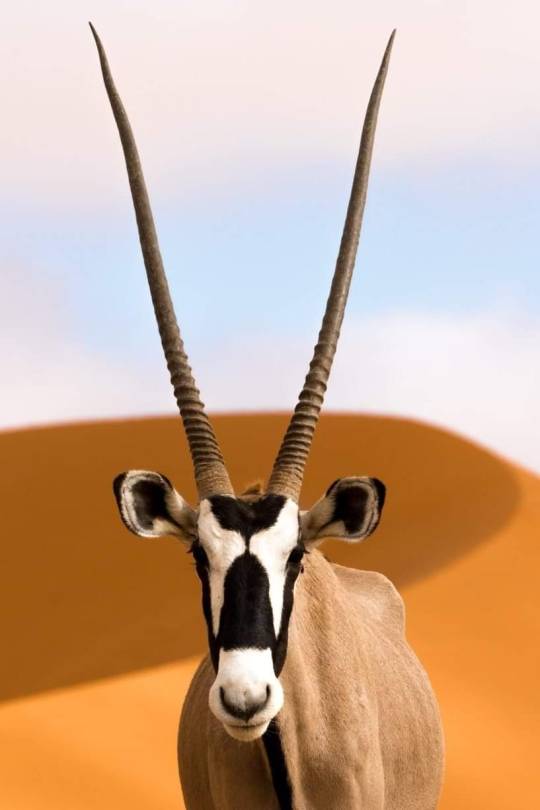
gemsbok (also known as an Oryx).
Image by Pangolin Photo host William Steel Photography
Canon EOS 7D Mark II
Sigma 120-300mm f/2.8 DG OS HSM Sports lens
Focal length: 220mm
ISO: 250
F stop: f/10
Exposure time: 1/500 sec
174 notes
·
View notes
Text
jupiter, at 3 different levels of magnification

firstly, a shot from my phone camera from last year- essentially no magnification. just looks like a bright star here.
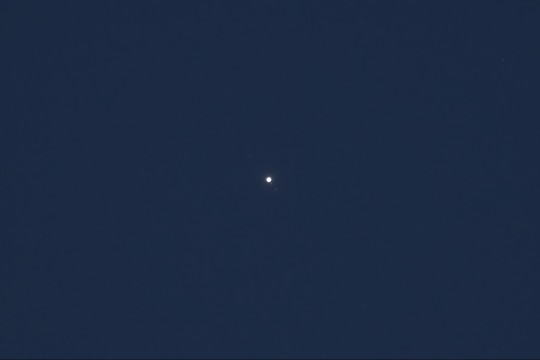
second level: a shot from my nikon camera at 300mm with a telephoto lens. you can just barely see jupiter's moons here, the little dots in a line around it. no detail on jupiter yet, still too small.

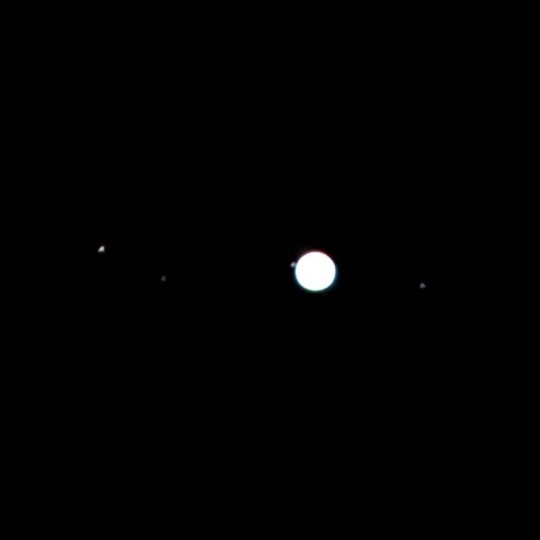
and finally, two shots through my 8 inch dobsonian telescope (using phone camera), at 1200mm. pretty much equivalent to the longest telephoto lens you can get.
at this focal length detail like the larger/more prominent cloud bands and great red spot are visible (can't see the spot here since it was on the other side of jupiter when i took the photo), along with the moons being very easily visible if you expose for them (hence why there's two photos here)
soon i plan on getting a real planetary camera, and will probably get a 2x barlow along with it, letting me get far higher quality images at double the focal length (2400mm or so)
will reblog this and update it when that happens !! stay tuned
(edit: just realized jupiter won't be visible again until june at the earliest. unless i get it very very soon and get a shot before it goes away you may have to stay tuned for a little while)
#astrophotography thoughts#astrophotography#astronomy#astronomy thoughts#space thoughts#space#night sky#jupiter#planets#telescope
145 notes
·
View notes
Text
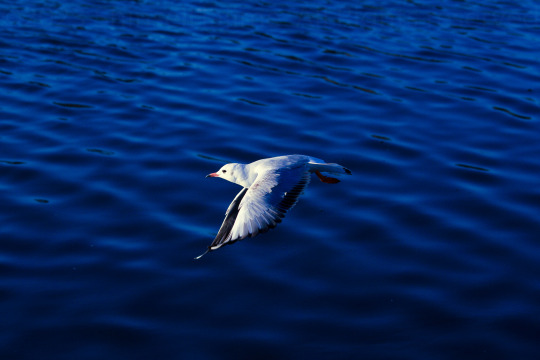
美しく青いカモメ
beautiful blue seagull
camera : Canon EOS Kiss X4
lens : SIGMA APO 70-300mm F4-5.6
Aperture : F5.6
Focal length : 70mm
ISO : 200
Exposure : 1/1600sec
#japan#photography#landscape#original photographers on tumblr#photooftheday#original photographers#photographers on tumblr#日本#birdphotography#seagull#beautiful#canon#canonphotography#sigma#blue
24 notes
·
View notes
Text

NIGHT HUNTER | Jonas Classon, Sweden | Bronze | Canon EOS-1D X Mark II with Canon 200–400mm f/4 lens. Focal length 300mm,
1/160 second, f/4, ISO 3,200. https://petapixel.com/2021/09/01/roadrunner-blocked-by-u-s-border-wall-wins-best-bird-photo-of-2021/?fbclid=IwAR1-JzEUS-nn9Rw4Sa-RGDJgMIrODByaEPlveA_C33R5hloajKfvT1LqMg4
23 notes
·
View notes
Text

Feeding
A tundra swan feeding in the hot spring creek along the Red Rock Highway. Yes, there is a feeding muskrat in the background.
Nikon D500, Manual Mode, Tamron 150-600mm VC G2, F/5.6, ISO 250, ET 1/6400, Focal Length 300mm, Vibration Control on
#tundra#swan#tundra swan#water#water fowl#water bird#fowl#bird#swimming#wild#wildlife#nature#winter#wintertime#rocky#mountains#rocky montains#rockies#beavehead#beaverhead deerlodge#beaverhead deerlodge national forest#photograph#Photos of Southwest Montana#photos of southwest montana#beaverhead-deerlodge national forest#dillon#brad christensen#montana#photographer#beaverhead
6 notes
·
View notes
Text

Venetian Beauty
One of my absolute favorite things about travel is not only seeing the gorgeous natural landscapes and natural wonders around the world, but experiencing the rich and fascinating cultures of others first hand. This world is an incredible place full of diversity and endless differing perspectives. It has been an amazing experience stepping outside of my own culture to learn about others from all over the globe. Travel has been so enriching and eye opening that I made cultural and linguistic anthropology my main focus for my academic studies.
One of the more well known cultural celebrations from Italy is Carnevale di Venezia, or as we know it, Carnival. This is a time where locals and visitors alike don elaborate, stunning, creative, and unique costumes and enjoy numerous balls and extravagant events. Simply walking through the maze of narrow, cobblestone streets of Venice is enough to see the beautiful display and hard work of those in costume. However, Saint Mark’s Square is where everyone gathers and where the festivities occur!
Exif Data: Canon 5DMIII, Canon L Series Lens 70-300mm
Focal Length: 300mm
Aperture: F5.6
Shutter Speed: 1/40
ISO: 1000
20 notes
·
View notes
Text
Happily In Motion | English Springer Spaniel | New York
Happily In Motion | English Springer Spaniel | New York
English Springer Spaniel.
The English Springer Spaniel always seems to have this simple joy about them.
They just seem happy go lucky. trotting across the show ring.
The English Springer Spaniel looks to have a happy, joyful, open mouthed smile while in motion.
Eyes closed, just feeling the moment. Not a care in the world.
Photo details: Nikon D300S. Nikon 300mm f/4. Focal length 420mm. ISO…

View On WordPress
#a life of dogs#daily photo#do the work#Dog#Dog Breed#Dog Photos#dog show#Dogs#Dogs purpose#English#English Springer Spaniel#Must Love Dogs#New York#photo of the day#photographer#Photography#practice#shipping#Show Dog#Spaniel#Springer Spaniel
2 notes
·
View notes
Text
A Time To Stay Put

A dog refusing to budge despite much persuasion on a fine day in the botanic gardens. Photo credit: Jonathan Chua.
This was captured from across the lake at the equivalent focal length of about 300mm. It wasn’t cropped in further as I had wanted to include the subjects’ environment.
#photographers on tumblr#flora fauna#flora photography#landscape photography#landscape pics#nikon photography#nikon zfc#people pics#photography tips#sigma 1.4x teleconverter#sigma 150mm macro
1 note
·
View note
Text
Sh2-37 nebula and the small Sagittarius star cloud, 12 hours exposure at 300mm focal length. I like this area of the sky. pretty



110 notes
·
View notes
Text




Week 2 SDL : 36 Photo's
Reflection: In this SDL, I captured portraits and wide shots of my younger brothers, despite the struggle of keeping them still. They did well as my models for the day as i had to be patient with them. A valuable lesson I gained was the importance of adjusting my aperture settings. Initially, I had a low aperture, resulting in a bright background and not getting the depth of field i wanted. Experimenting with aperture, shutter speed, and keeping ISO as low as possible became my focus.
I utilized two lenses during the shoot, a 55mm and a 300mm. Testing different focal lengths and apertures revealed the 300mm lens's capability to create a more background blur. For next time, I aim to maximize natural lighting by positioning my models in a way that highlights their facial shapes. This experience enhanced my understanding connection between camera settings, lenses, and lighting to achieve desired photographic effects.
0 notes
Text

Tusk!
Pangolin Photo Safaris guest image by Matje Ralf, Germany.
Image captured on a game drive in the Chobe National Park while staying at the Pangolin Chobe Hotel
Nikon D750
Nikon 300mm f/4 AF-S lens
Focal length: 300mm
ISO: 100
F stop: f/4
Exposure time: 1/2500 sec
22 notes
·
View notes
Text
full moons
this is a recap of every full moon i’ve photographed since i started doing astronomy/astrophotography, going on 10 months now i believe (i think i missed one full moon in november 2022)
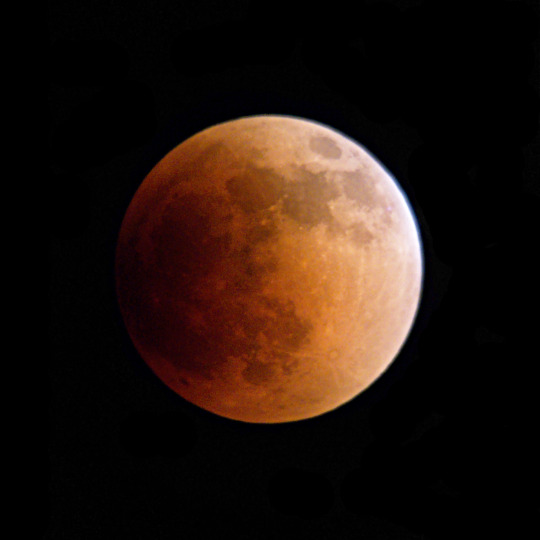
starting with the lunar eclipse of may 2022
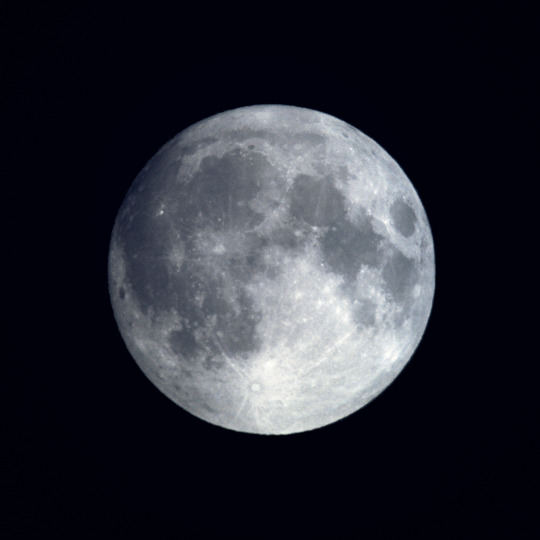
june 2022, had bad seeing here i think
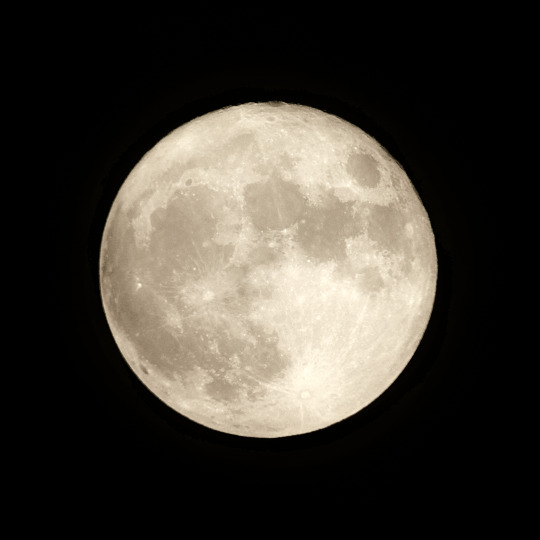
july 2022, i like how the yellow tint looked here
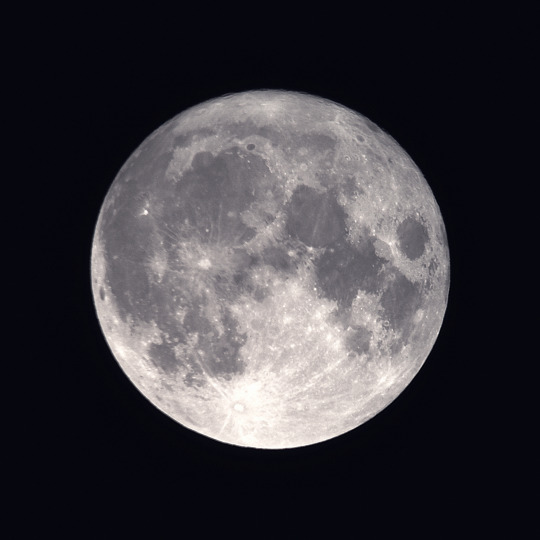
august 2022, not bad seeing there

september 2022, pretty good seeing here too

october 2022, streak of three for good seeing

this is the moon/mars conjunction of december 2022, and coincidentally the first one i took on my nikon Z5 camera at 300mm instead of my dobsonian telescope/phone adapter
i know the telescope has a way higher focal length (300mm on full frame vs 1000mm on telescope) but doing it on my phone just wasn’t reliable, focus was always shaky and also having to move around a 40 pound telescope isn’t fun
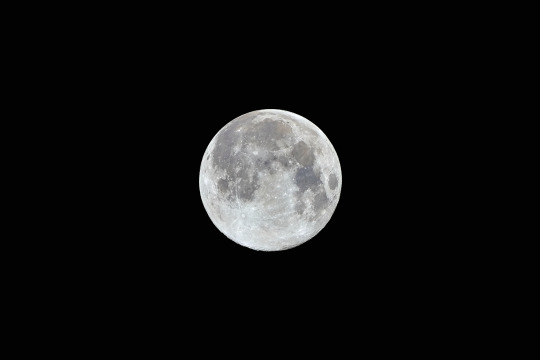
first full moon of 2023, brought out slight mineral colors here, but probably could’ve sharpened it a bit more
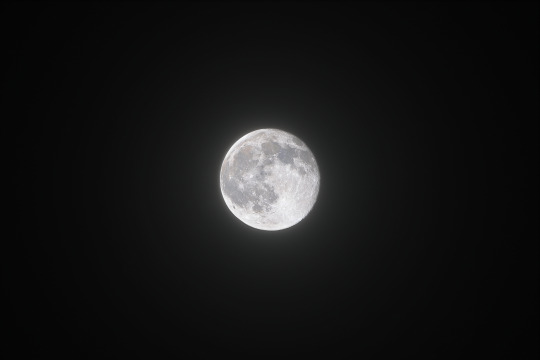
lastly the newest one, february 2023. i know this isn’t truly full (97%) but the image i took the night before of the actual full moon wasn’t nearly as good (seeing was worse)
did a composite here, of two images exposed longer for brightness, overlaid on the main stacked image that has the detail
43 notes
·
View notes
Text
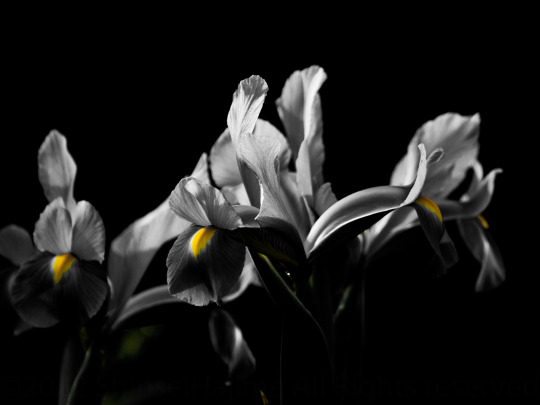
菖蒲の写真から黄色だけを抽出してみた(^^;)
I tried to extract only yellow from the iris photo (^^;)
camera : Panasonic DMC-L10
lens : OLYMPUS 70-300mm F4-5.6
Aperture : F5.0
Focal length : 202mm
ISO : 200
Exposure : 1/320sec
#japan#photography#landscape#original photographers on tumblr#photooftheday#original photographers#photographers on tumblr#日本#panasonic#iris#monochromephotography#monochrome#olympus#lumixphotography#菖蒲#白黒写真
15 notes
·
View notes
Text
Olympus M.Zuiko 300mm f/4 IS PRO Lens: A Compact Marvel for Telephoto Excellence
The Olympus 300MM F4 PRO stands as a testament to Olympus's commitment to innovation in the micro four-thirds format. This telephoto lens, with its stellar optics and compact design, has become a favorite among photographers seeking high-quality, long-reach capabilities without compromising on portability.
At the core of the M.Zuiko 300mm f/4 IS PRO is its impeccable optical performance. The lens features a sophisticated arrangement of 17 elements in 10 groups, including three Super ED (Extra-low Dispersion) lenses, effectively minimizing chromatic aberrations and ensuring exceptional image sharpness. This optical prowess makes it a go-to choice for wildlife photographers, sports enthusiasts, and anyone in need of a reliable telephoto option.
One of the standout features of UK Camera Club lens is its bright f/4 aperture, allowing photographers to achieve stunning background blur and maintain image clarity even in challenging lighting conditions. The wide aperture also makes it versatile for various photographic genres, including portrait and nature photography.
The inclusion of in-lens image stabilization is a game-changer, especially when shooting handheld at extended focal lengths. Olympus's Sync IS technology combines the lens's stabilization with compatible camera body stabilization, providing an impressive 6 stops of compensation. This is particularly beneficial for photographers on the move, capturing dynamic subjects without the burden of a tripod.
Designed with professional durability in mind, the Olympus Camera features a robust, weather-sealed construction. This ensures the lens can withstand the rigors of outdoor shooting, making it a reliable companion in diverse environments.
In terms of handling, the lens boasts a thoughtful design with customizable function buttons and a manual focus clutch for quick adjustments. The compact and lightweight form factor of the lens enhances its appeal, offering photographers a portable solution without compromising on image quality.
In conclusion, the Olympus 300MM F4 PRO lens stands as a remarkable achievement in the micro four-thirds realm, delivering exceptional telephoto performance in a compact package. Whether capturing wildlife in its natural habitat or freezing fast-paced sports action, this lens continues to impress with its optical prowess and versatility.
0 notes